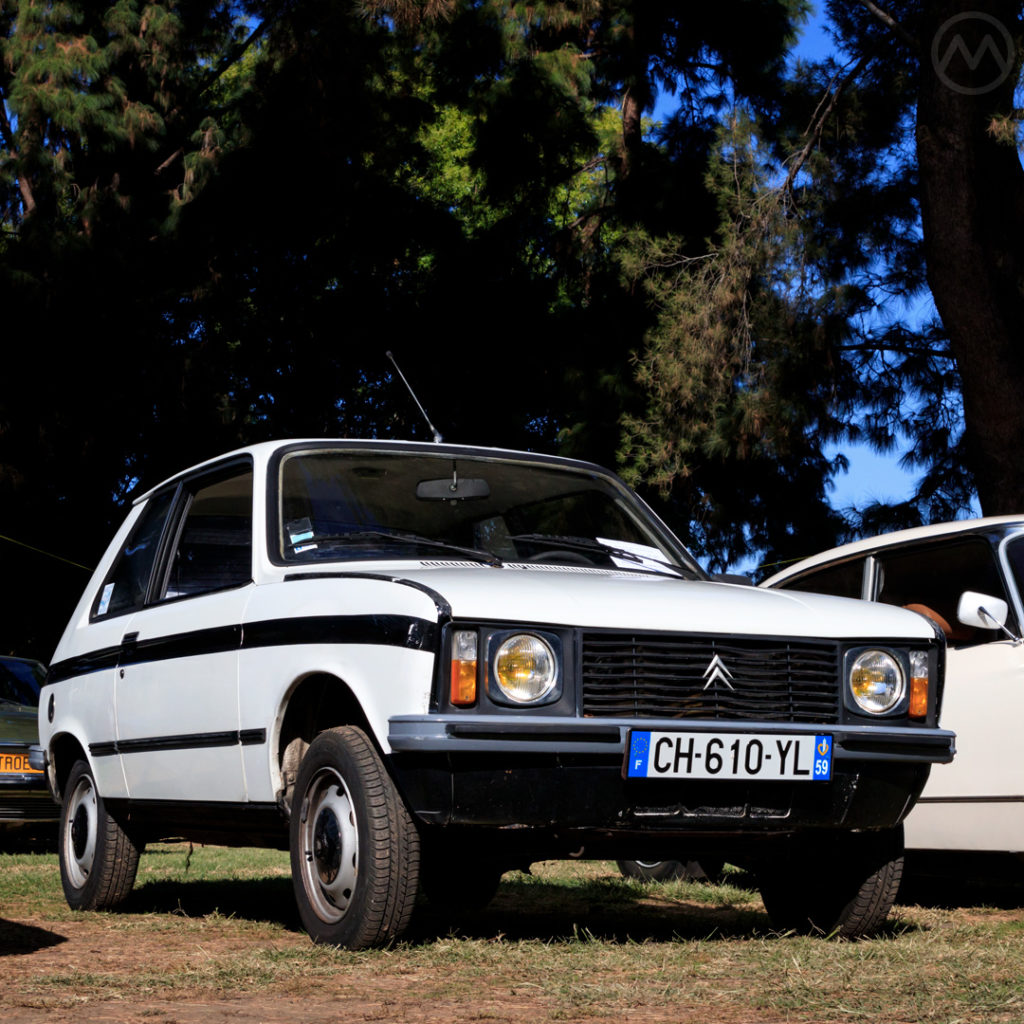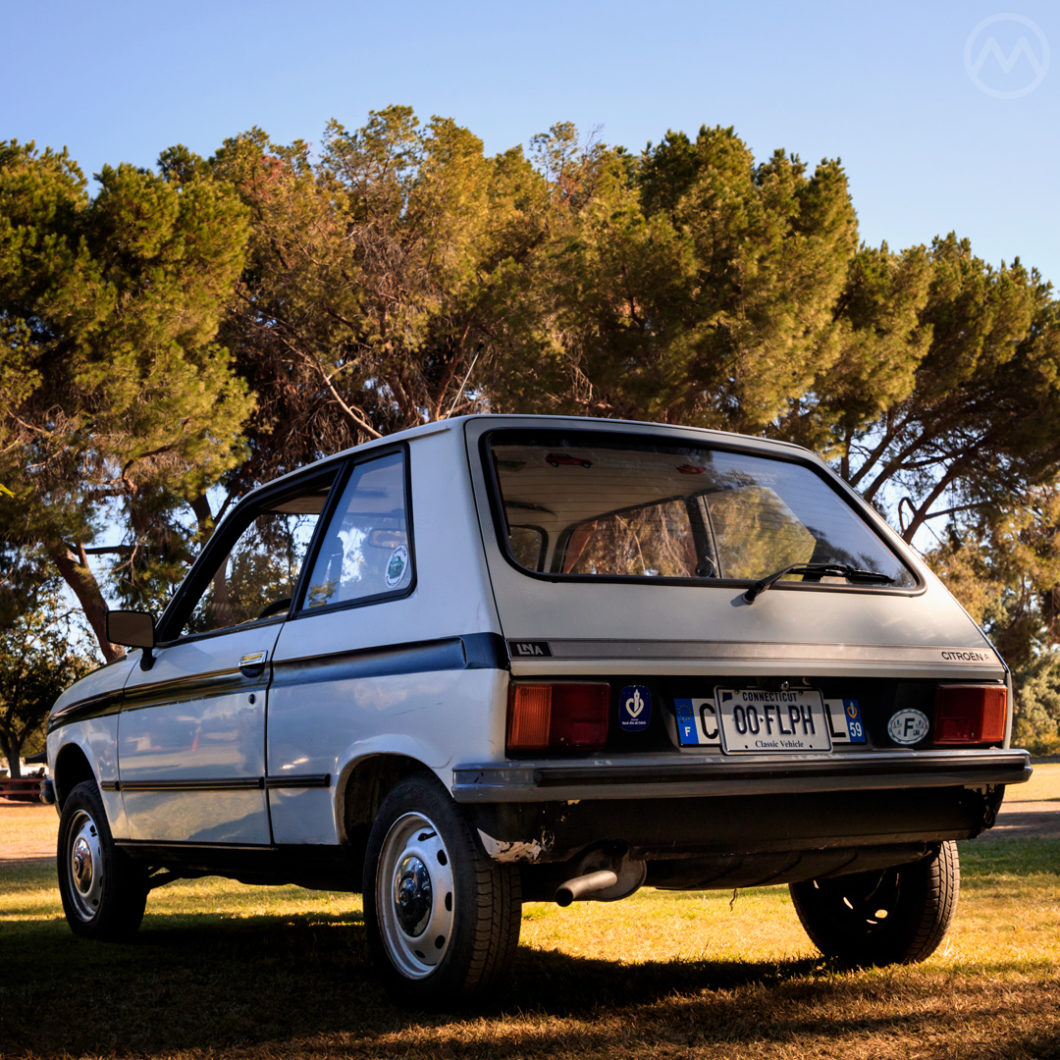No doubt President Valéry Giscard d’Estaing, having eked out an election win over labor favorite Francois Mitterrand only months earlier, breathed a sigh of relief on December 4, 1974.
Ailing Citroën, for months in very public trouble with tens of thousands of jobs and as many as 22 factories on the line, was saved from oblivion by a complex, government-facilitated, takeover by Peugeot. As a consolation prize, rival Renault got Berliet trucks, which Citroën had bought in 1967. Order was restored, jobs were saved.
Everybody went home happy?
Sochaux insisted that both Citroën and Peugeot’s identities would remain distinct. For the most part that would be true until the 1990s, although the companies really did become a single monolith by the early eighties.
But in the summer of 1976, Citroënistes were aghast when they got their first look at the very first car to come out of the merger – the Citroën LN.
Citroën’s Little Old Cars
Citroën had no fewer than four economy cars at the time. The newest was the Dyane, a modified 2CV nearly a decade old. There was also the Ami, freshened in the late 60s but dating to 1961 and fundamentally tied to the 2CV. And then there were the 2CV and plein aire Mehari.
All of them were collectively still selling okay, but Citroën had no answer for modern alternatives like the Renault R5 or Fiat 127; the latter of which, ironically, was at one time being considered as the basis for an Ami replacement.
Long before Citroën became one with Peugeot, it had been partially owned by Fiat, who had picked up a share from Michelin at a bargain price in 1968. Fiat had hoped to buy Citroën, but actual control was vetoed by the De Gaulle Government.
Once De Gaulle was retired, Fiat got more aggressive about taking control and formed a new holding company – Societe de Participation et de Developpment Industriel (PARDEVI) to try and get a more direct handle on things.
The PARDEVI agreement saw Fiat get 49% of Citroën, but former corporate overlord Michelin still controlled a majority and repeatedly resisted Fiat’s efforts to find what today’s consultants call “corporate synergies.”
Ultimately, Fiat just couldn’t get full control of Citroën, but in the time they were together they initiated “Projet Y,” which would turn into “Projet TA” and later the (perhaps poorly named in English) “Projet VD” after Fiat gave up in frustration and sold its shares in PARDEVI back to Michelin in 1973.
The Y was originally supposed to use the bones of the Fiat 127 and much later the project became the Visa, but it was still years away in 1975 – Citroën needed something right away with which to shore up the bottom end of its lineup, having just replaced the DS with the CX at the top.
A Short Solution
In the short term, the company said, it came up with the LN to give dealers a competitor for the modern superminis. It looked exactly like one of those other superminis – Peugeot’s Paulo Martin/Pininfarina-penned 104, because it basically was a 104.
It was formed, of course, from the 2-door, short-wheelbase 104ZS, which had been new in 1973. There were cosmetic changes, but there was no mistaking it for something other than a modified 104. Citroën were adamant that this was a one-time deal.
The basic recipe involved lightly reworking the shell of the 104ZS, which would also later be used for the Talbot Samba, and equipping it with the 602-cc flat twin from the 2CV family. Inside it had a one-spoke steering wheel (like on other Citroëns) over mostly 104ZS interior pieces but with unique interior fabrics in quirky 1970s patterns.

It was basic transportation and in the early days sales were mostly limited to France. In 1978, when the Visa finally emerged (using the floorpan of the 104), the LN became the LNA with the Visa’s enlarged 652-cc flat twin, the A standing for “Athletique” – now with 36 horsepower instead of the original 32.
Fast it wasn’t, but it was cheap to buy and run and at only 135” (343cm) long, it could fit almost anywhere. It handled like the 104ZS but thanks to only having a twin, it was even more sedate. In the early eighties, Peugeot-sourced fours of 954 and 1,124-cc were added to keep pace with other superminis and keep the car relevant. They were faster, but the weird LNA is best known as a 2-cylinder car.
For a “stopgap” car it ran a very long time – into 1986 before being replaced by the very modern AX.
LN/LNA Legacy
The LN/LNA is mostly forgotten now and many LNAs have been cannibalized for 2CV projects, but it’s a unique little window onto a transitional time at PSA.
Low-power European city cars like this were never sold in the United States, and Citroën had abandoned the U.S. at the end of 1973 – but this car was privately imported to the states a couple of years ago but Jonee E., who displayed it at last week’s Best of France and Italy show. It is likely the only LN or LNA in the United States, possibly in all of North America.
To read more about the journey of this particular car, check out the story of how it came to the USA at bit.ly/2CKxIU4.

